My mother’s 90th (!) birthday was yesterday and today would have been my grandmother’s birthday. In honor of both of them, I thought it would be an auspicious day to feature my newest (as yet in-progress) collage quilt, a lace polar bear, which is named “Winfrieda” after my maternal grandmother—my Oma Frieda.
I’ve talked about the “stories” of my quilts in plenty of posts (see the Quilt Stories category). The story of a subject helps me make decisions regarding the collage itself—like what color, what fabric, what size, what background—especially when I inevitably encounter road blocks of one sort or another. Sometimes a subject comes with a story and sometimes I make one up, but the story almost always expands in scope as I work on the collage. Lovely connections happen as the creation “comes to life.”
All my subjects seem to get a name as I work on them, even if it doesn’t become the final title of the finished quilt. Winfrieda the polar bear received her name due to old photographs from an uncle’s collection (below). That uncle is the baby in his mother’s arms—my Oma Frieda. My mother is the girl, the second oldest of seven, at the far left of the photos. I don’t think I’ve seen a photo of my grandmother any younger than she is here, and in the photo to the right she looks determined and defiant. Qualities needed as she raised her family in wartime Germany.
However, the story of Winfrieda the polar bear starts not with my Oma Frieda, but with wanting to tell the stories of species of animals that are in trouble. Species not expected to survive in the wild beyond the middle of this century, mostly due to habitat loss exacerbated by climate change. Top of the list is the polar bear. Not far down is the Monarch butterfly. If you’re one of my long-time readers, you know that I have a special spot in my heart for those monarchs, having raised and released them for years. But that will be the story of another quilt.
I did think twice about a polar bear, I mean it’s such a poster child for climate change, it seemed too obvious. But as I read and thought more about it, these creatures are literally losing the ground beneath them. Polar bears need the ocean ice to hunt, it’s how they evolved, and their hunting platforms are melting away. When temperatures warm enough to permanently prevent or continue to delay new ice to form, so will a polar bear’s ability to survive as a wild species.
And that’s when my Winfrieda story started to come together—the connection of polar bears to us as human beings—our influence and effect on them and the natural world in general—a chain of consequences that we don’t even realize, at least not until relatively recently. In a vision totally backwards to how I normally work, I knew the background of my polar bear would need to be plain and stark—like the void left in a cold ocean after an ice floe had melted. I didn’t know what fabric I’d use for the bear herself, but I knew it would be a solid dark background.
In photos of polar bears, so often they’re shown as mother and cub groupings, and we all know of the reputation of maternal bond and defense of a mother’s young. And then I remembered the photos of my grandmother and her children. My Oma Frieda looks proud and protective, with her children surrounding her, looking straight at the camera from an angle slightly above, as if the family was standing on a small hill.
And that’s how I saw my polar bear, as standing tall and looking at us, looking down on us actually since a female polar bear can grow to be 8 feet tall—which is how tall my Winfrieda collage happens to be.
But before I could even begin, I needed photos to work from. I mentioned this in talking to friends, and photos were offered—first from photographer Joel Davidson, who gave me more than enough prints of poses and details to create a line drawing of a standing bear (thank you again, Joel!).
Later, as I was well into the collage, I felt like I wanted to change how her arms fell, moving them to hang straight down her sides. In stepped another friend who’s husband had taken a photo of a polar bear in a similar pose (thanks again, Frank!). Polar bear photos above, used with permission—color prints by Joel Davidson, black and white by Frank Sterrett.
Early on I had the crazy idea of trying to make the polar bear seem to disappear into the background—literally disappearing into the ocean void before our eyes. When this idea of transparency hit me—that you could see the background through the bear—the inspiration to only use lace as a collage medium wasn’t far behind. And once I had thought of using lace, I immediately remembered that my mom had a lot of both old and new lace stashed away in her storage shed. After hauling out six or more tubs of every definition of lace you could think of, I had all the source material I needed.
A special thank you to those who have shared special lace pieces of their own with me—I’ve tried to include a bit of each in the making of Winfrieda.
Of course I’ve also collected bits and pieces of handcrafted lace through the years, though never really putting them to use in a collage before. They were waiting for the right project. I delved deeper into the handwork and “fiber” aspect of lace by using crocheted doilies, trims, and other somewhat dimensional materials—as opposed to the lacey and glittery yardage I do sometimes use to add final touches in my “normal” fabric collages.
In Winfrieda, I challenged myself to forgo the use of luscious quilting fabrics and color to create a piece using only white and cream lace. Since lace is filled with holes, allowing the background to show through, it was good to chose the background fabric ahead of time. The black cloth has a bit of a velvety texture to it and serves as the darkest value of the collage, showing up either more or less from behind the various lace fabrics, affecting the perceived values—lights and darks—of the lace pieces.
The use of vintage lace and handwork has added to Winfrieda’s story. Winfrieda is a powerful matriarch and many of the materials I have added to her collage were no doubt made by family matriarchs—not necessarily from my family, but from someone’s family. I know that so many of the pieces of lace I used (and will continue to use since this piece isn’t finished yet) have their own stories that I’ll never know, but will add both visual and emotional depth to this piece nevertheless. Using lace of all forms has expanded my definition of “fabric” in my fabric collage technique.
What also has made this collage experience unique for me is that I created most of the Winfrieda’s first draft during the two months of my first ever “Fly on the Wall: Susan Carlson Studio Watch” series. This weekly live Zoom series during the months of October and then December 2022, gave me extra motivation to move the quilt forward week to week in order to show and demonstrate to my viewers—the “flies on the wall” of my studio—something that I myself was learning as I worked with this “new” lace medium.
It was certainly a successful experience for me; and viewers’ comments have led Tom and I to believe it was worthwhile and inspirational for them as well. And that was a big point of the series—to show how I work by experimenting and trying ideas (even those that don’t work), talking through my thoughts, figuring things out as I make progress down this new path, inspiring others to take steps down their own creative paths.
I consider where I’m currently at with Winfrieda to be a first draft. What do I mean by that? It means I have completed an overall piecing of the image, though there are still some black gaps in her “shadowed” parts. Next, I’ll fill those spaces with some of the sheer lace fabrics that are working well for the darker values, plus I need to get a fair amount of gluing done to get rid of the majority of pins. Then comes the second draft, where I’ll take a good look at her and decide where she needs adjustment and improvement.
This is how I work on each of my collages. After that second draft, there will be at least one more draft and probably a final fine-tooth-comb draft. As I tell my students who get overwhelmed or stalled by the process or have the need to get “everything” done in the first pass: start by getting something down—then keep at it. As long as you have something down, you can fix it up later.
In February, I’ll be fixing up Winfrieda.
Space Available in May 2023 Live Online Class
You are invited to join me via Zoom for a 5-Day Live Online Fabric Collage Class. This class is for all levels of fabric collage proficiency, from beginner to advanced. The class runs May 29–June 2, 2023.
The Portraits Only class that I had announced earlier filled this past week with my Patreon Subscribers and with those who had earlier sent an Expression of Interest.
I have included the number of spots available for the following May-June class and will do my best to update this number in this post as it changes. If you find on the registration page that the class is sold out and would like to be placed on a waitlist, please email Tom ([email protected]). Thank you.
CLASS DESCRIPTION: Five-Day Live Online Fabric Collage Classes (Animals Only)
Price: $995 per student
Required Class Fee: $169 for the Fabric Collage Master Class—an online resource “manual” to refer to before, during, and after class—yours for life ($199 regular price; contact tom@tomallenbooks for coupon code for discount. This fee is waived if you already own the Master Class)
Hardware and Software Requirements: Computer, tablet, or other larger-screen device; reliable internet; ability to photograph and send images of collage in progress (a cellphone is recommended); Zoom meeting software (free to download)
Maximum Number of students: 12
Subject Matter: This class deals with animal subjects—furred, feathered, or scaled—pets, exotic animals, birds, insects, sea life, sea slugs, whatever type of animal appeals to you.
Included: Forty-five minute private pre-class coaching session to prepare you for Day One of class.
See links below for more information.
May 29-June 2, 2023
2 Spots Remaining (as of April 20)
Register and pay here:
https://susancarlson.com/product/may-2023-live-online-fabric-collage-class-with-susan-carlson-animals-only/
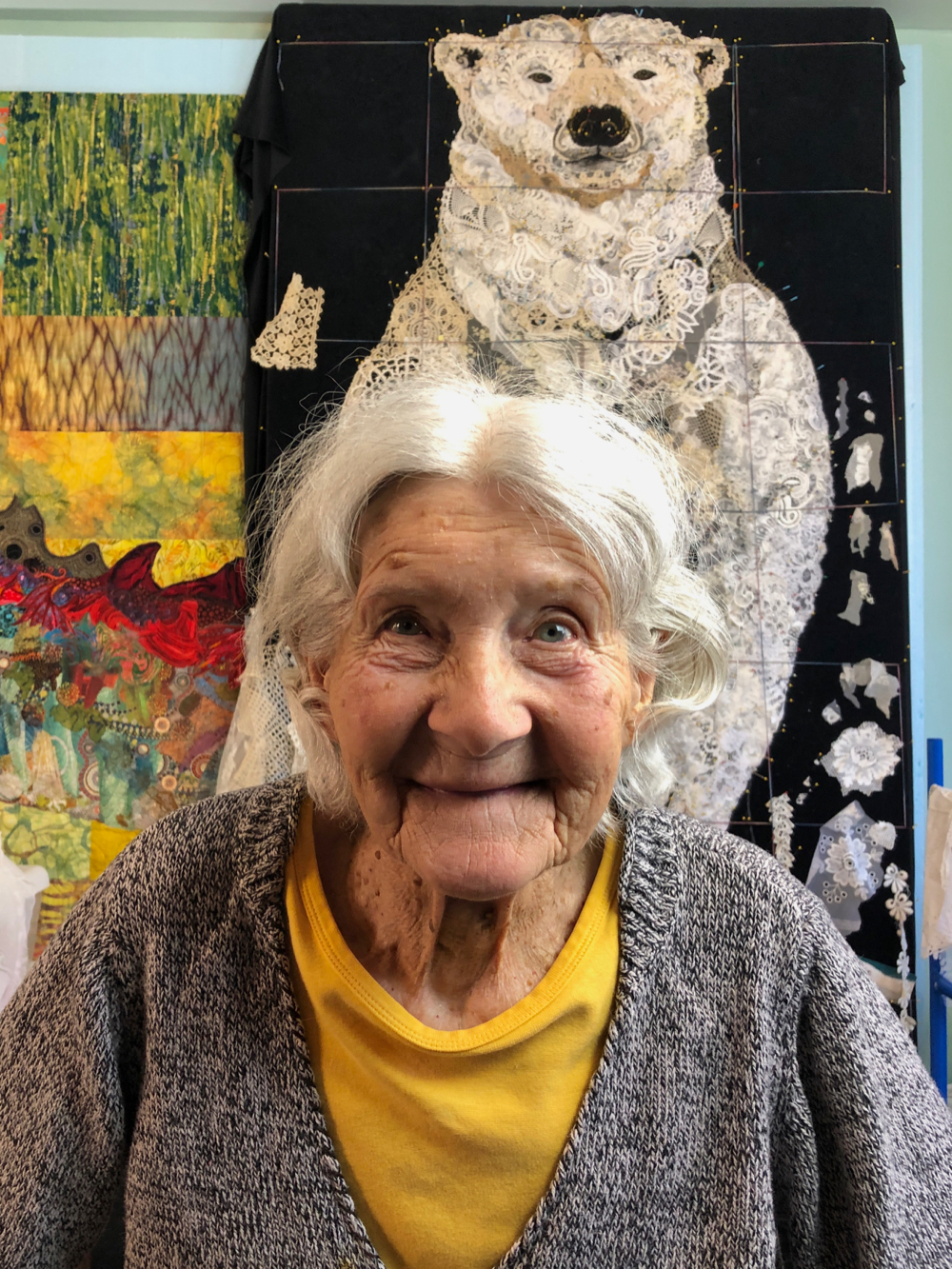
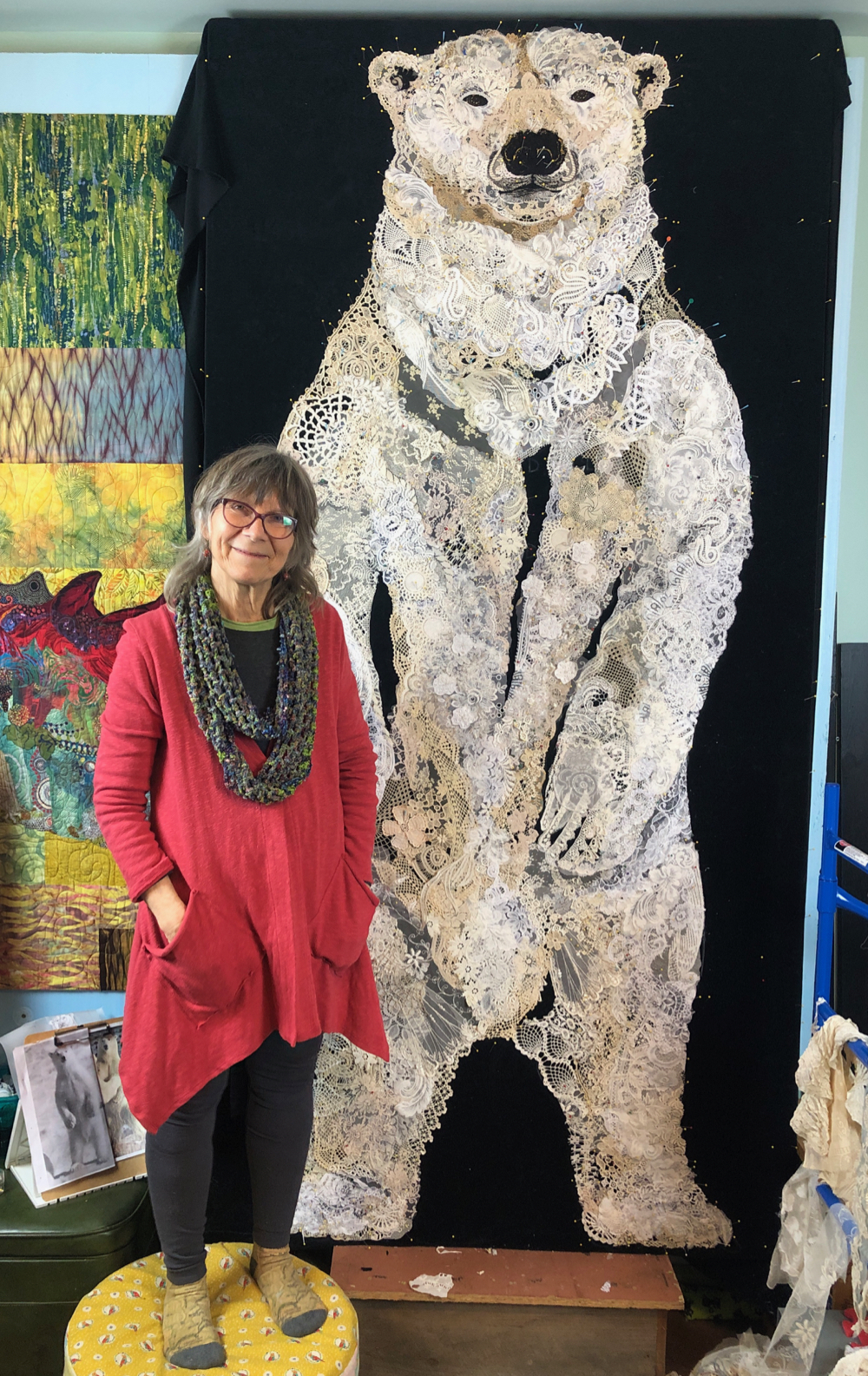















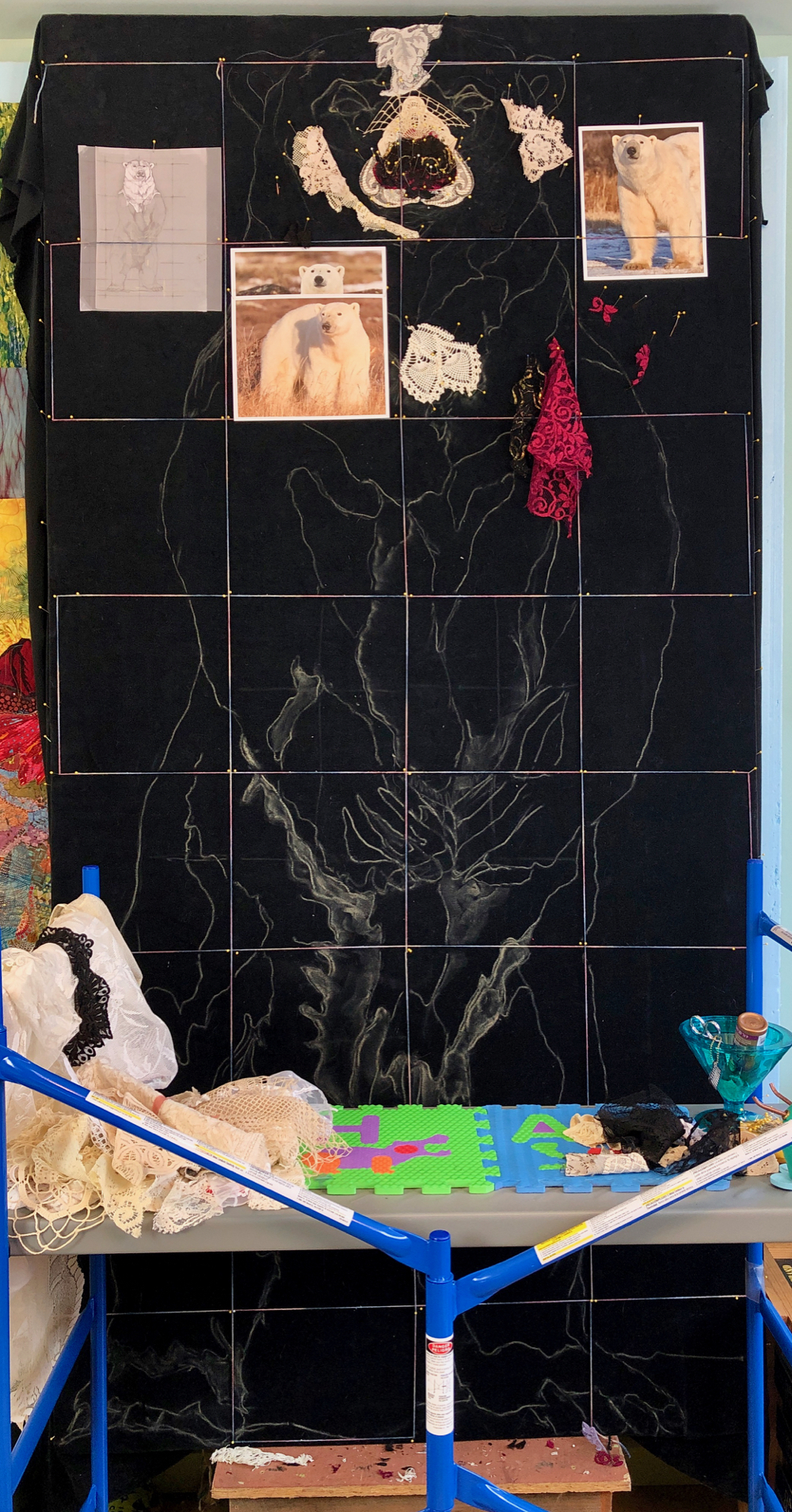
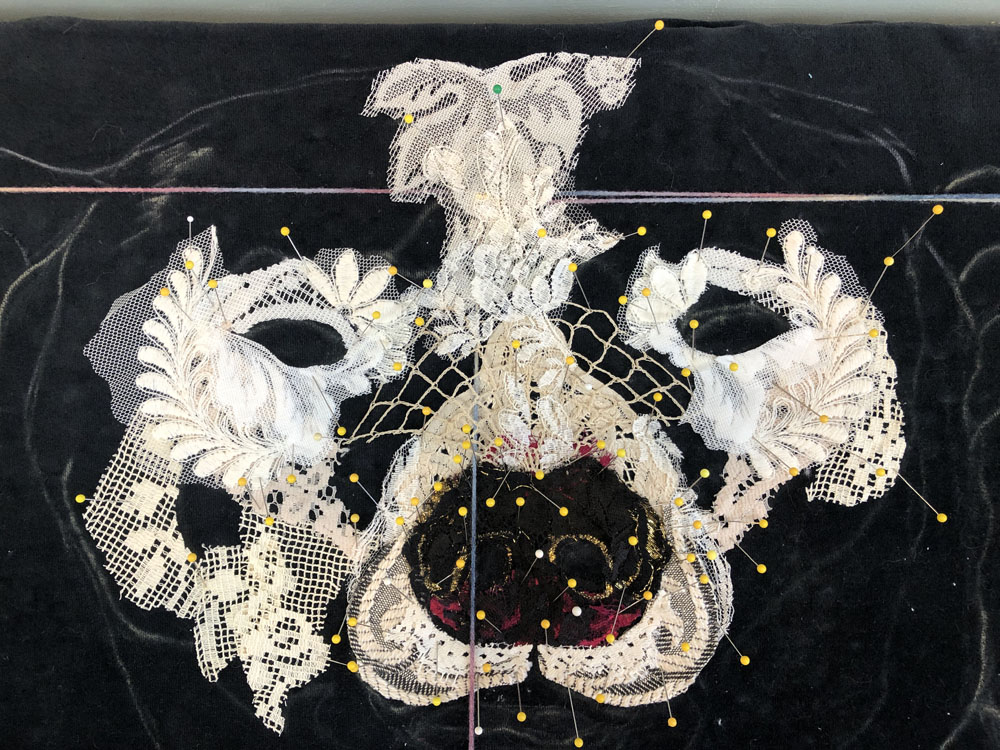
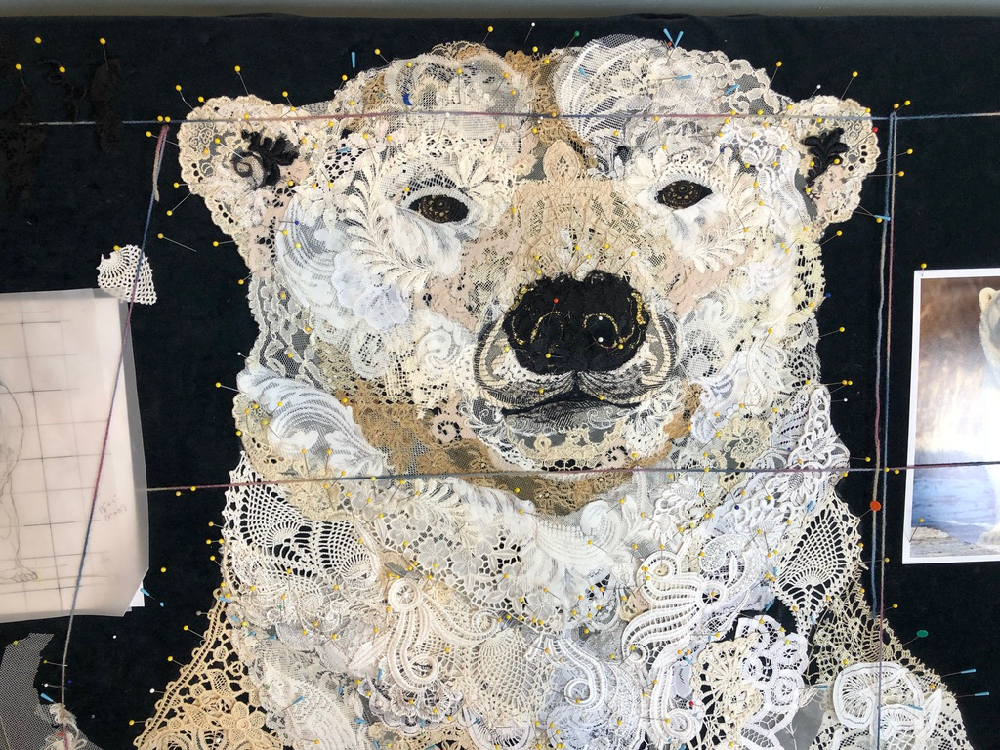










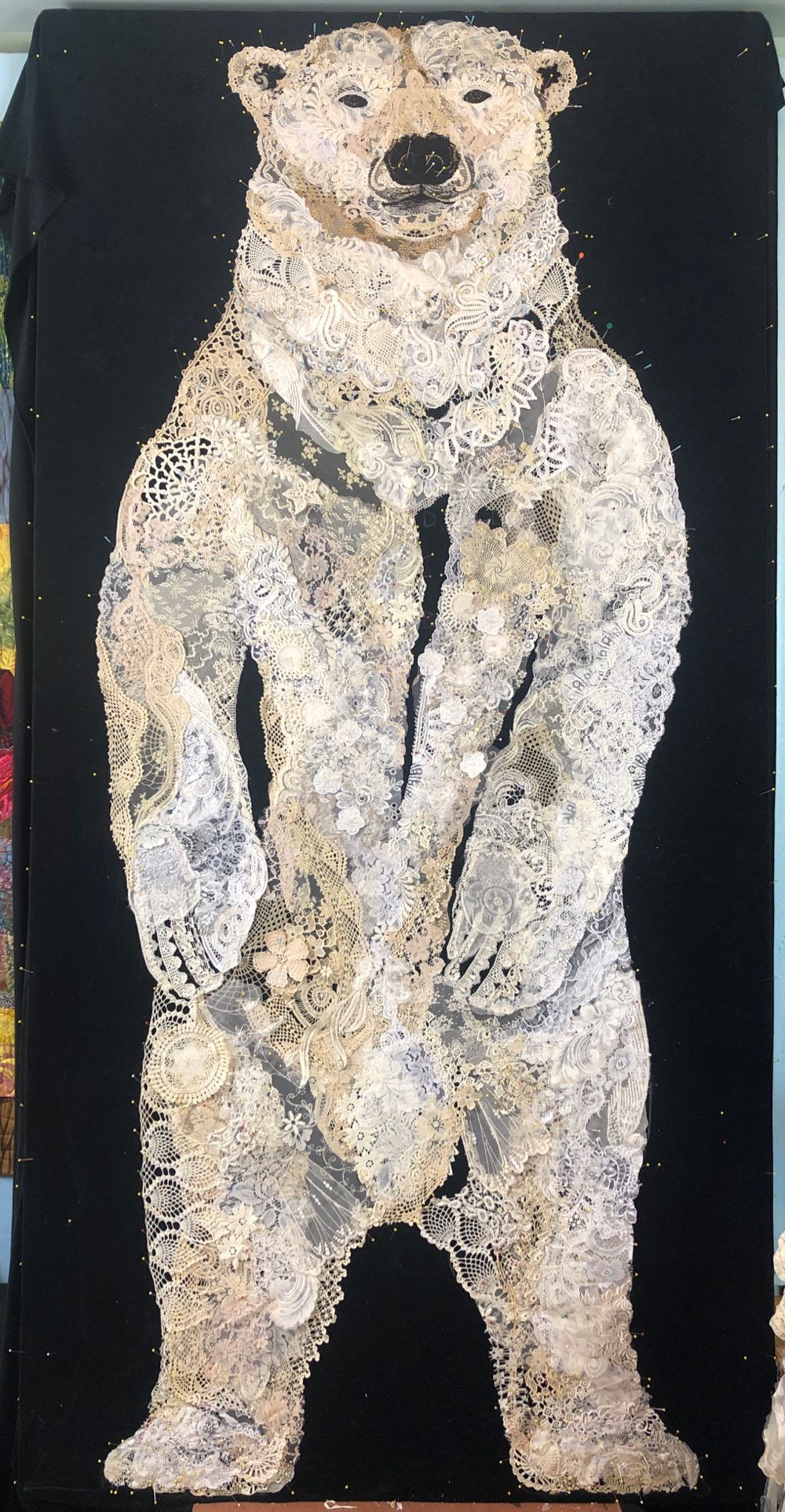
Winfrieda is FABULOUS!
What a beautiful lady your mother is. Happy belated Birthday wishes, Susan’s Mom!!!
I love your use of lace in Winfrieda! Beautiful, Susan!
Winfrieda is breath taking. Beautiful. I am attempting to find a computer monitor in our house that is large enough to see the photo in full length!!! As a child, there was a resturant in Parksburg Iowa that had a taxadermy full size polar bear that I was deathly afraid of. Must say there is no fear of Winfrieda!! She is beautiful and I can see how much she is and will be loved. Thank you for this gorgious piece of art. And happy birthday to all.
Having been a “fly on the wall” in both the Winfrieda series of classes, it was icing on the cake to be see the overview and story all in one post. That surface you were standing on looks smaller all the time. Thanks also for including Djinni cat; I know she was a constant companion. I’ll be eagerly watching for more progress on this heartfelt reminder of our beloved animals.
Absolutely stunning!
Absolutely beautiful!! An amazing piece of art!!! Thank you for sharing
Stunning collage!!
Wow! Incredible. You never cease to amaze! Such a gorgeous use of the lace fabrics your Mom collected over the years.
I know you miss your mom and what a great way to honor her.
After being part of these Fly on the Wall sessions, it is fun to be taken back to the beginning. These sessions are so meaningful to my collage obsession. Looking forward to seeing Winfreida as she is finished. Thank you for sharing “the process.”